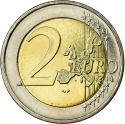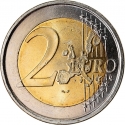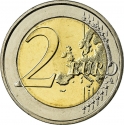You are about to finish your registration. Please check your mailbox (including spam folder). There should be a letter with a confirmation link. Check setting to make sure that your e-mail address is correct.
Send letter againDescription
The Platonic Academy was founded by Plato (428/427 BC – 348/347 BC) in ca. 387 BC in Athens. Aristotle (384–322 BC) studied there for twenty years (367–347 BC) before founding his own school, the Lyceum. The Academy persisted throughout the Hellenistic period as a skeptical school, until coming to an end after the death of Philo of Larissa in 83 BC. Although philosophers continued to teach Plato's philosophy in Athens throughout the Roman era, it was not until 410 AD that a revived Academy was established as a centre for Neoplatonism, persisting until 529 AD when it was finally closed by Justinian I.
Obverse

|
Depicts the profile of Plato, the founder of the Platonic Academy. The inscription (2400 YEARS SINCE THE FOUNDING OF THE PLATONIC ACADEMY) and the name of the issuing country (HELLENIC REPUBLIC) in ancient Greek font on the left. The mint mark (stylized acanthus leaf, Athens) and the date on the right. On the bottom is the monogram ΣΤΑΜ of the engraver Georgios Stamatopoulos. The twelve stars of the European Union surround the design on the outer ring. 2.400 ΧΡΟΝΙΑ ΑΠΟ ΤΗΝ ΙΔΡΥΣΗ ΤΗΣ ΑΚΑΔΗΜΙΑΣ ΠΛΑΤΩΝΟΣ |
|---|---|
Reverse

|
A geographical map of Western Europe spans the outer ring and inner core on the right side of the coin. The inscription 2 EURO is superimposed over the map of Europe, with the numeral “2” located in an open field representing the eastern Atlantic Ocean. 2 EURO |
| Edge |
HELLENIC REPUBLIC in Greek ΕΛΛΗΝΙΚΗ ΔΗΜΟΚΡΑΤΙΑ ★ |
Characteristics
| Type | Commemorative Issue (Circulating) |
| Material | Bi-Metallic |
| Ring | Cupronickel |
| Center | Nickel Brass |
| Weight | 8.5 g |
| Diameter | 25.75 mm |
| Thickness | 2.2 mm |
| Shape |
|
| Alignment | Medal |
| Mint |
Bank of Greece
|







